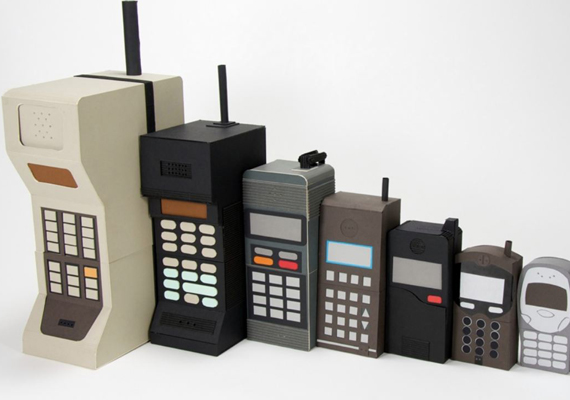
As the Telefonica Foundation organises the exhibition ‘Historia de las Telecomunicaciones. Colección Histórico-Tecnológica de Telefónica’ (History of Telecommunications. Historic and Technological Collection of Telefonica), we go over the five most important milestones in these three centuries of progress in communications.
3 february 2016
From the 19 century, distance communication has evolved to faster and better ways of communications. As a tribute to those three centuries of progress, the Espacio Fundación Telefónica presents in Madrid the exhibition Historia de las Telecomunicaciones. Colección Histórico-Tecnológica de Telefónica (History of Telecommunications. Historic and Technological Collection of Telefonica), which includes 50 selected pieces, from telegraphs to smartphones. Now we go over the 5 most important moments in the history of Telecommunications.
1. Electric telegraph
In the late 19 century, messages were transmitted almost instantaneously thanks to the invention of the telegraph. The most famous prototype was the one designed by Samuel Morse, which consisted of a code that assigned a number of points and lines to each letter of the alphabet. This system allowed to increase the trasmission speed. In 1844, the first telegraph line between Washington and Baltimore (USA) was established.
2. Wireless telephone and telegraph
The wireless telephone and telegraph and the broadcasting revolutionised the distance communication of the 20 century. In 1976 Alexander Graham Bell created the Gower-Bell prototype which he presented in the Paris World Fair in 1878. It was there, where the Spaniard Rodrigo Sánchez-Arjona acquired one of those prototypes, which permitted the first rural communication through a private line in Spain in 1880 between two locations in Badajoz, 8km apart from each other.
Image source: upload.wikimedia.org
3. Manual and automatic telephony
At the beginning of the 20 century in Spain new buildings were built which hosted equipment for telephone service. The manual switchboards were controlled by telephone operator (always women) who received calls and established the communication among the subscribers. The manual switchboard system was operational in Spain until 1989.
Almost a century before, Almon Brown Strowger, a funeral parlour businessman from Kansas City, developed the first system of automatic commutation. This way, any user could directly dial the phone number of the person with whom they wanted to talk with without using a switchboard.
4. Satellite communication
In the late 60s the central battery automatic phones (Gondola Model) were very popular. This model could be used on the table or hanged on a wall. The plastic with which it is made, made it possible to lower the manufacturing costs and, as a consequence, it increased the demand. The “supplementary telephone” got to the kitchens and bedrooms of the Spanish homes.
It is the era of communication. Antenna stations for satellite communications were displayed and the first computer networks were created.
5. From mobile communication to the web 2.0
The radio, the walkie-talkies and the wireless telegraph made way to mobile telephony, which at the beginning was only installed in automobiles and only allowed to use the voice. In the 80s the Dyna TAC model by Motorola was very popular and the mobile telephony became increasingly accessible. Nowadays, thanks to 4G telephony, communication is instant, permanent and global.
The syllabus of the subject Advanced Wireless Communications and Mobility of the Master’s Degree includes an introductory section about the modern wireless communications systems, like 4G, GSM and UMTS, among others.











